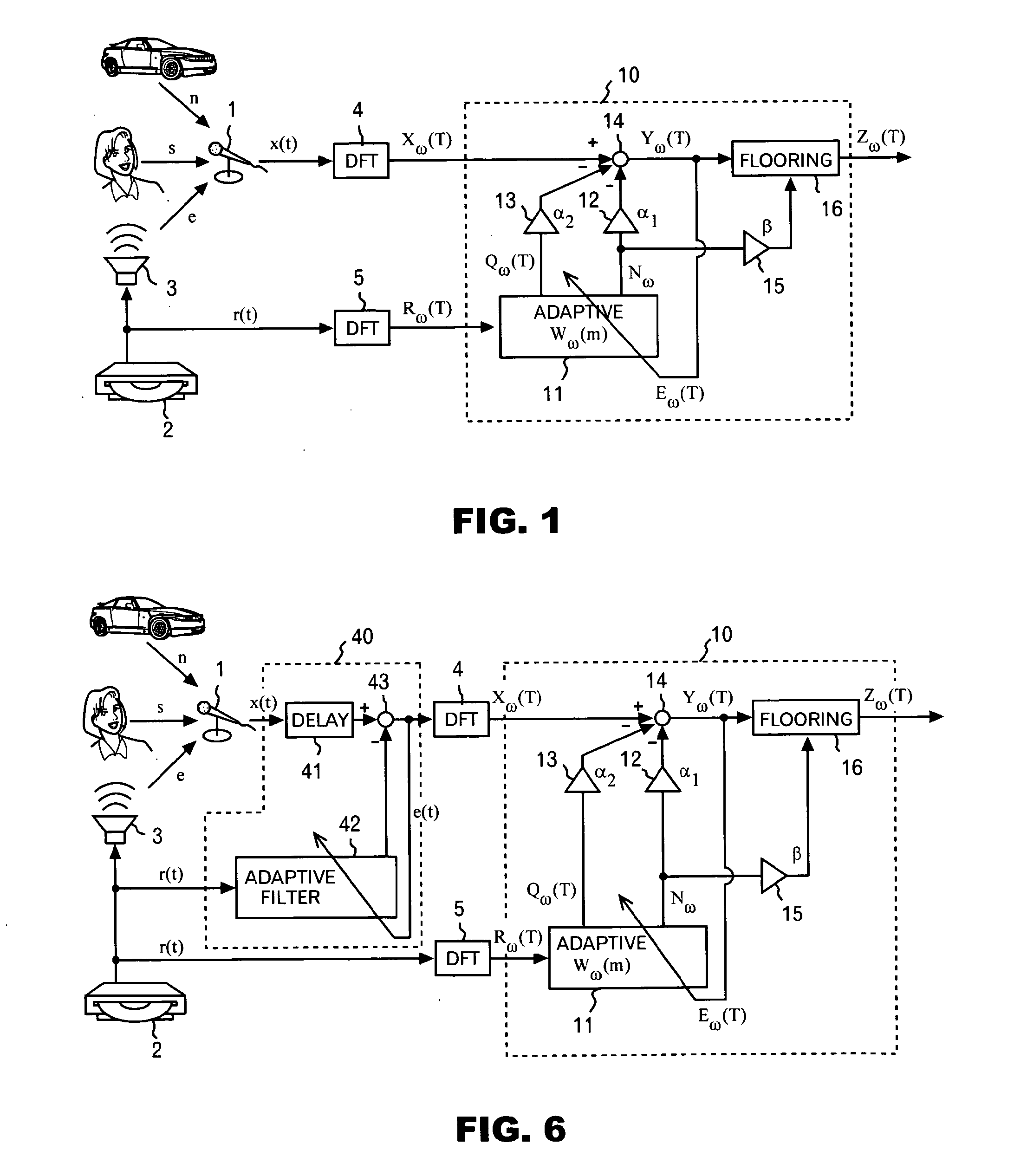Noise reduction device, program and method
a noise reduction and program technology, applied in the field of noise reduction devices, noise reduction programs and noise reduction methods, can solve the problems of degrading the performance of a conventional echo canceller in the vehicle compartment of a moving car, the inability to recognize speech in a case, and the inability to perform speech recognition in a case, etc., to achieve the effect of improving noise robustness
- Summary
- Abstract
- Description
- Claims
- Application Information
AI Technical Summary
Benefits of technology
Problems solved by technology
Method used
Image
Examples
Embodiment Construction
[0038]As described above, the spectral subtraction technique is widely used in a speech recognition process nowadays. With this taken into consideration, the present invention provides a noise reduction technique which makes it possible to improve noise robustness in an environment where non-stationary noise, such as sounds coming from the CD / radio, exists in addition to stationary noise. This is achieved by effective use of existing acoustic models and the like, without changing the framework of the spectral subtraction technique to a large extent.
[0039]In addition, in a case where sounds coming from the in-vehicle CD / radio are a sound source of echo, it can not be expected that a time during which no echo exists occurs. For this reason, stationary noise components can not be estimated exactly by use of the conventional techniques as shown in FIGS. 14 and 15, which techniques are based on an assumption that a time during which only stationary noise exists occurs. With this taken in...
PUM
 Login to View More
Login to View More Abstract
Description
Claims
Application Information
 Login to View More
Login to View More - R&D
- Intellectual Property
- Life Sciences
- Materials
- Tech Scout
- Unparalleled Data Quality
- Higher Quality Content
- 60% Fewer Hallucinations
Browse by: Latest US Patents, China's latest patents, Technical Efficacy Thesaurus, Application Domain, Technology Topic, Popular Technical Reports.
© 2025 PatSnap. All rights reserved.Legal|Privacy policy|Modern Slavery Act Transparency Statement|Sitemap|About US| Contact US: help@patsnap.com



